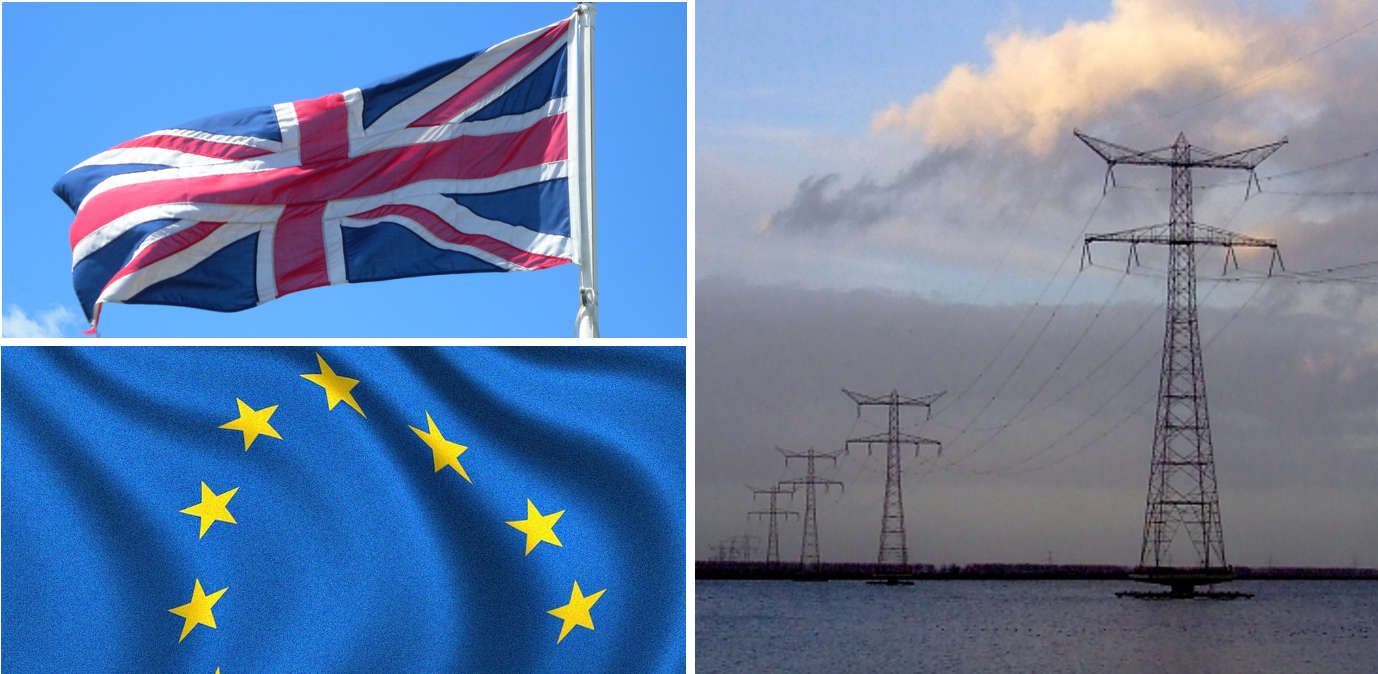The UK Government energy policy in-tray:
by Inline Policy on 15 Jun 2016
In the run-up to last Thursday’s EU referendum, policy direction, announcements and news flow dried up as the politicians became increasingly consumed with the debate. Following the tumultuous decision taken by the British people, this piece considers the in-tray that the Government - above all, DECC, but in addition other parts of Whitehall - needs to return to on energy and climate matters.
However, the drastically altered new circumstances mean that this is not business as usual. Further analysis will be required once the (enormous) dust has settled and the political pieces and personalities have re-arranged themselves. This analysis may need to be done in two stages:
- initially, if David Cameron decides on a temporary reshuffle (although there are no signs of that at this stage) to last up until October. There is recognition that a further - four-month - hiatus on all substantive government business is untenable;
- following the election of a new Conservative party leader in October, and therefore the establishment of a new government. A general election may well follow.
Fifth Carbon Budget as the Litmus Test
Whatever transpires, certainly the most urgent - and arguably the most significant - decision that the Government will take on energy and climate policy this year concerns the Fifth Carbon Budget. By the end of June, this budget, which will set the cap on UK emissions for the period 2028-2032, will be written into law by Parliament.
The big question will be whether the Government decides to follow the advice of the Climate Change Committee (and Amber Rudd's hot off the press speech on 29 June is a positive sign), which is to: (1) continue on a steady low-emissions pathway; (2) avoid the type of abrupt regulatory changes which can deter investment; and (3) ensure the Government gives itself sufficient lead time for making more difficult changes to policy.
There are obvious implications here for renewables policy, - where the industry has been critical of the Government’s stop-start approach - and for energy efficiency, but it also brings transport and renewable heat into the spotlight. If these sectors, both of which are of course not covered by the EU Emissions Trading System (NB: at this early stage, we have no idea whether UK energy and industrial sector emissions will continue to be covered by the EU ETS post-Brexit), are to deliver the emissions reductions necessary to enable the UK to hit its overall budget targets, the Government needs a step-change in how it incentivises the take-up of electric cars and heat pumps.
It has therefore been timely that the Select Committee for Energy and Climate Change has an ongoing enquiry into the UK’s 2020 renewable heat and transport targets.
The significance of the Fifth Carbon Budget goes more widely, however. Anything that would imply a weakening of the Government’s emissions reductions targets would call into question its commitment to a policy on climate change that has consistently occupied a leadership position within Europe and internationally. A diluted target would alarm clean energy businesses and campaigners and exacerbate worries that a new Conservative government in the autumn might further row back on climate and low-carbon policies, and send a negative signal to investors viewing the clean energy sector as one of the UK’s growth areas of the future.
Further Investment Indicators
But if the decision on the Carbon Budget will set the immediate tone, the energy industry will be anxiously regarding how the Government handles other key policy mechanisms which have a direct impact on investment decisions.
In November 2015, Amber Rudd indicated that there would be three more Contracts for Difference (CfD) rounds during this parliament, with the first of these being towards the end of 2016. The Secretary of State also indicated that these rounds would only take place if the government’s cost reduction requirements for offshore wind were met.
The Budget in March put some numbers of the strike price of offshore wind, thus enabling Treasury to commit money to offshore wind and other less established technologies (including tidal and wave power). However, there was no mention in the Budget about what support more established technologies (onshore wind, solar etc) could expect.
Investors will therefore be hoping for signals from the Treasury - which will demonstrate how much financial support they are prepared to give - on the mature renewables sector by September at the latest, if a CfD round is to take place by this November. The risk is that this process will be put on hold pending the formation of a new government.
Although the next Capacity Market (CM) auction won’t be the more direct test of low-carbon government policy that the autumn CfD round will address, it will scarcely be without relevance. From March-April, DECC ran a consultation whose purpose was to “primarily focus on a number of further reforms designed to ensure sufficient, reliable capacity is available in 2017/18”.
This ought to mean a capacity auction in early 2017; and the consultation was on record that the Government intends to amend the Regulations and the Rules in time for the opening of the 2016 Capacity Market pre-qualification period. DECC can therefore be expected to be fairly quick out of the blocks on the new rules after the immediate aftermath of the referendum. Two key areas that they are on notice to tackle are:
- the widespread concern that small-scale diesel generators had unfair advantages in the last CM round; and
- linked to this, the “embedded benefits” that small distribution-connected generators accrue under present CM charging arrangements, an issue that Ofgem have identified.
On a wider point, DECC will be aware that, although the Capacity Market is meant to provide assurance that homes will be powered and the lights left on it will be a touchstone for the Government’s approach towards clean energy as well.
The other area of domestic policy which needs urgent attention is energy efficiency. Unfortunately, the UK was ranked as one of the worst EU member states for energy efficiency by the European watchdog, Energy Efficiency Watch (EEW), which assessed national progress over the last three years.
The UK’s ranking as No 27 out of 28 member states reflected the hole in UK energy policy which has essentially been present since the demise of the Green Deal under the previous coalition government. Energy efficiency regulation for UK businesses is also a weak set of measures.
In March, the Government announced that the Carbon Reduction Commitment will end after the 2018-19 compliance year. The Energy Savings Opportunity Scheme (ESOS) - transposed from the EU Energy Efficiency Directive – did come into force in 2015. However, it only requires energy savings audits every 4 years and does not compel companies to implement efficiency measures identified by these audits. The overall verdict was of low policy ambition and relatively little progress in energy efficiency policies over the last three years.
The Government’s approach - scrapping the zero carbon homes policy, and the announcement that the Energy Company Obligation (ECO) will be restructured for 2017 and will target substantially fewer homes - since it was elected in May 2016, has not improved things.
With 80% of the British housing stock projected to be still standing by 2050, a policy initiative that can cover retrofit, fuel poverty and incentivise consumers to invest in making their homes more energy efficient has to be a priority.
The Shadow of Hinkley Point
If the Fifth Carbon Budget is the most urgent of the issues lying in the energy in-tray, the one causing the biggest headache is undoubtedly the long-running saga of Hinkley Point C. The fundamental difference, however, is that the decision on “go or no go” is by and large out of the hands of the British Government, resting with a combination of state-owned EDF and their political masters, the French Government.
The final investment decision is now to meant to take place in September. In the meantime, the French and EDF will obviously be thinking long and hard about the implications of Brexit, including the uncertain political outlook (as presumably will the Chinese investor, the China General Nuclear Corporation).
Suffice to say that, if the French (and Chinese) do ultimately decide not to proceed, the UK is going to need a Plan B very quickly - and one hopes that a credible contingency is available to turn to. Incidentally, Amber Rudd's speech of 29 June suggests that small modular reactors may be part of that contingency planning.
Coal Is Still An Issue
There is potential added pressure on the Government’s security of supply policy stemming from their announcement, made just before the Paris COP last November, to phase out coal-firer power entirely by 2025. Since Amber Rudd made that announcement, the Government, subjected to some intensive lobbying, has seemed to drag its heels, running a consultation in the spring. Following the referendum, attention will now turn to the result of the consultation and the decision the Government must make. DECC policymakers will have taken note of the recent report published by the conservative think-tank Bright Blue, stating that the coal phase-out should in fact be accelerated and that UK energy security will not be endangered, as some of coal power’s supporters have insisted.
What now on the European Agenda?
Only two weeks ago, we were writing about the heavy European agenda due over the next few months.
Running through what will emerge from Brussels over the coming months tells us why:
- reviews of the Directive on Energy Efficiency and the Directive on the Energy Performance of Buildings (EPBD), both relevant to UK energy efficiency policy (as articulated above) while the UK remains a member state;
- the processing of legislation on Phase IV of the EU Emissions Trading System (ETS), putting in place the rules for this core policy instrument for reducing carbon emissions. There are also many who say that Phase IV should be redesigned to drive a stronger carbon price across Europe which can in turn accelerate investment in low-carbon products and services. This legislative process will probably be delayed following the UK MEP Ian Duncan’s decision to resign as Rapporteur;
- the review of the Effort-Sharing Decision for 2020-2030., which covers European emissions not covered by the EU ETS, such as transport (except aviation and international maritime shipping), buildings, agriculture and waste. The Decision sets binding annual greenhouse gas emission targets for member states. National targets and the EU’s overall effort will of course need to be aligned with the EU’s 2030 emissions reductions targets, taking account of Europe’s commitment to the Paris Agreement. But the 2030 targets will no longer apply to the UK;
- a draft directive on how the EU and its constituent member states will reach its 2030 target for energy from renewable sources. The UK, along with some other members, consistently rejected the notion of binding national renewables targets when that target was being negotiated at heads of government level;
- legislative proposals to implement the new European energy market design, under the auspices of one of this European Commission’s flagship programmes, the Energy Union. Key objectives will be better linked wholesale and retail markets, strengthened regional co-operation and increased cross-border trade.
- a communication from the Commission on the decarbonisation of the transport sector and how it can contribute to the achieving the 2030 emissions reduction target.
EU legislation in these areas will continue to apply to the UK for as long as it remains a member. But there will be two major areas of uncertainty about the longer-term which will directly impact on the shorter-term:
- which areas of EU and UK energy and climate policy will be retained in UK legislation once the UK is no longer a member;
- whether alternative trading arrangements between the UK and the EU - and, crucially, how quickly - can concurrently be put in place. More to the point, a number of those EU-wide initiatives detailed above apply to the post-2020 period, when the UK will presumably have long departed the European Union, with various implications for emissions reduction targets and related clean energy development.
In Conclusion
The UK has been a very real leader on European energy and climate policy for the last 15 years - ranging from its pioneering approach on the internal energy market to mobilising European global leadership in the UN climate change negotiations.
That leadership will be lost, at least in a formal sense, unless some extraordinary new arrangements can be put in place in due course. But that is not to say that - depending on the new political situation which emerges over the next six months - the UK may not ultimately still be a leader, domestically and internationally. But the UK would be a major loss to EU leadership and policy-making (see for example the concerns already expressed about potential delays in the ratification of the Paris Agreement).
The Government’s “re-set” of energy policy last autumn felt somewhat underwhelming in the lead that it gave investors. If it had been a Remain vote last week, a re-set 2.0 looked on the cards, in the light of this bulging in-tray. When and whether there will be a more fundamental re-set - with implications for the fossil fuel sector as well as the low-carbon sector - remains to be seen. Self-evidently, it will be impossible to reach any broader conclusion while the post-23 June political landscape looks so uncertain.
Photo credit: Flickr (Creative Commons) by jay-jerry (top-left), Yanni Koutsomitis (bottom-left) and Lukasz Kryger (right). Modified to fit the screen.
Topics: European Politics, Energy policy, UK politics, Climate Change







Comments